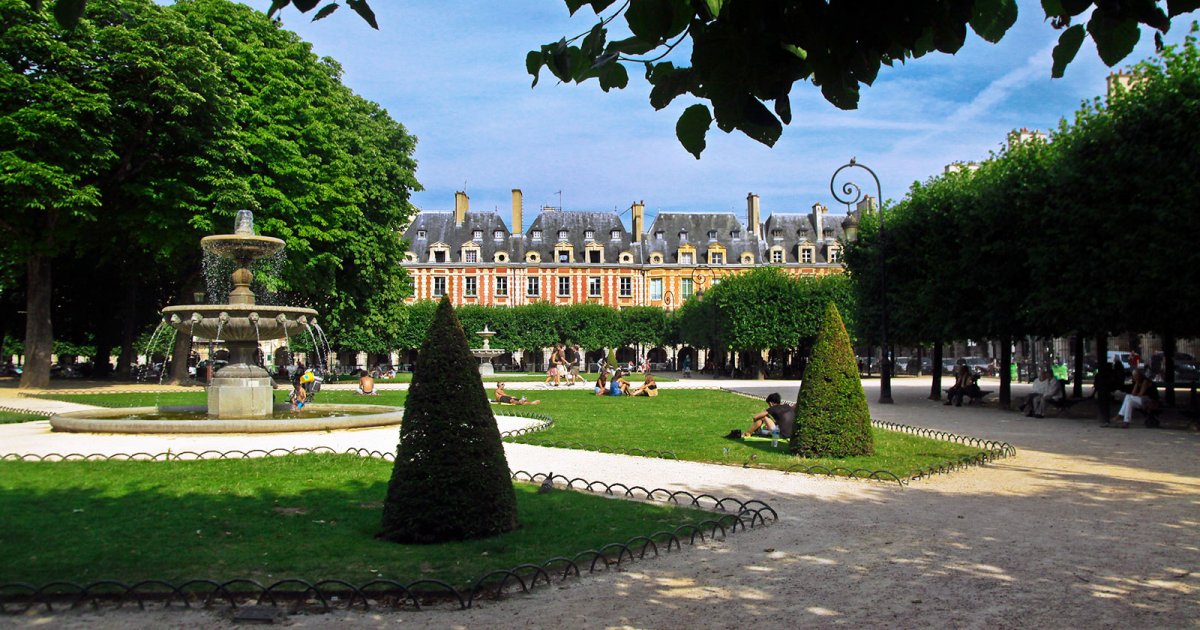PLACE DES VOSGES, Second Part
 Language: English / USA
Language: English / USA
Place des Vosges is one of the first examples of rational urban planning according to an orderly and geometric distribution of all its elements, including vegetation. And speaking of vegetation, I suggest sitting on one of the benches beside the triple row of trees bordering the garden's outer perimeter, and giving me a few more minutes to tell you a little more about the history and name of this square.
At the end of the fourteenth century the Hotel de Tournelles was located here, which was a royal residence with attached gardens. Catherine de Medici had the entire thing torn down in the middle of the 16th century after the death of her husband Henry II, which took place here when a spear went straight through his eye during a tournament. The space was then occupied by a silk fabric factory and its workers' homes. At the beginning of the seventeenth century, Henry IV, the first king of France belonging to the Bourbon dynasty, decided to turn the square into a kind of "mall" and a place for leisure activities. But he was killed in an attack and never saw the project completed.
So it was Louis XIII who inaugurated it with the name Place Royale on the occasion of his wedding with Anna of Austria, which it kept until the French Revolution. Its current name, however, refers to Vosges, the first French department to pay tax to the new Republican state.
The royal square almost immediately became the preferred residence of the then-aristocracy, and since then many illustrious figures have lived in these buildings over the centuries, including Victor Hugo, who wrote "Les Miserables" here. You can visit his house-museum here, where besides various paintings and portraits, the library, and the collection of photographs, you'll see about 600 drawings and sketches he did. The novelist's house at number 6 is directly opposite the 17th-century residence of Cardinal Richelieu, at number 21.
FUN FACT: Caterina de' Medici brought two revolutionary novelties to France from Italy. She introduced the fork to the country (before that people in court would eat with their hands) and a precious garment for ladies, especially when riding horses: underwear!
And with this we have finished our tour of Place des Vosges in Paris. MyWoWo thanks you for staying with us, and will see you at the next Wonder of the World!



